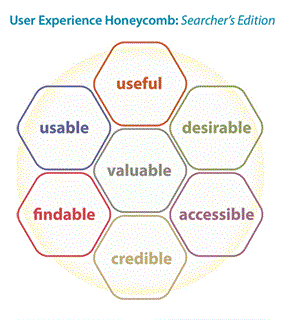By Northwoods Team
April 12, 2016
4 Minute Read
What Exactly Is User Experience?
The term User Experience – UX, in the trade – covers a lot of ground. It involves every aspect – practical, technical, perceptual and emotional – of every user interaction with a website. It encompasses how someone feels during and after visiting.
UX Goals
The crucial UX questions are:
- Did the user come away happy or frustrated?
- Did this website provide value to the user?
The UX designer seeks to make users happy by helping them accomplish tasks and meet goals with little frustration, while satisfying the users’ visual and branding expectations.
A good user experience will create:
- More engagement with the website per visit
- Repeat and loyal users
- Good word-of-mouth marketing
This experience goes beyond the direct interaction with the website. When users leave the site, they take the experience and the resulting attitudes and opinions with them. Thus UX affects the overall image of an organization.
Aligning Business Goals with User Needs
UX design must align business goals with user needs.
Years ago, businesses created websites around business goals and gave little thought to the user. Difficult navigation and excessive jargon often confused users (including internal users). In the early days of the internet, such websites could still have some utility, especially if competitors had no web presence at all.
No more. Just having a website – even a pretty one – won’t do.
Today, sites must engage with customers and internal users alike. With interaction at the forefront of our thinking, we can define clear business goals that align with user needs in order to achieve a great user experience. Such alignment
- Keeps projects focused on well-defined goals
- Increases user engagement and conversions
- Creates measurable metrics for success
Baking UX into the process of a project enhances development and the likelihood of success.
Business Goals
Typical business goals include:
- Driving traffic to the site and capturing leads
- Selling products or services
- Providing and disseminating content that positions the business as a knowledge leader
The next step moves toward more specific goal/objective statements, such as:
Goal: Increase brand recognition
Objectives: Increase promotions and storytelling in social media and web site blogging, to demonstrate value to users and encourage them to engage with the business.
Step three involves a content inventory and list of features that the business wants to provide users.
- Products – with images and specifications
- Case studies
- Ways to buy or contact the business
All this makes sense but says nothing about the people the business wants to engage or how the business will spark two-way engagement.
Learn About Users and their Needs
To align the business goals with user needs, know your users.
When a business learns about users’ wants, tasks, goals, needs, likes, dislikes, motivations, behaviors, and limitations, that business can create a website that provides value to those users. Know your target user groups and demographics as you build or update your site.
Every site will have different business goals and user needs. The UX team must learn as much as possible about the specific user groups. Research is a must, no matter how much you think you understand your target users. Research often contradicts assumptions and brings new knowledge into play.
Avenues to understanding target users:
- Statistics provided by search engine analytics
- User interviews
- User research
- User testing
- Observation
- Focus groups
The research methods help us see whether or not users value the site and whether it meets their needs and anticipates their wants. Good UX makes the user feel that the business understands its target market, and that feeling means deeper, richer engagement.
Peter Morville’s User Experience honeycomb can help us evaluate our site.
 Useful: Content was relevant
Useful: Content was relevant
Usable: Easy to use
Desirable: Visual design and branding were engaging and appropriate
Findable: Content was easy to navigate through
Accessible: Content was accessible to people with disabilities
Credible: Built trust with the user
Measure and Improve Success
Once we know user needs, we can set more specific and measurable business goals, create initial benchmarks to test success in meeting the goals, and learn where we need to adjust. We can also rule out design and development features that users would ignore or dislike.
Analytics show us what users are doing at our sites, but not what they would like to do. We should use a variety of measurements to create benchmarks.
For example, analytics might show that an Office Location page attracts very few visits. Does this mean that such a page has no value? Interview some users; do they complain about an inability to find an Office Location page? If so, the page has value, but navigation is an issue and the website is not as useful as it could be.
Analytics benchmark what’s happening right now. The User Interview can tell us what ought to be happening. In the case above, a findable Office Locations page could align user needs and business goals. User interviews open opportunity to make a valued page more visible.
Once you make the change, you can gauge its effectiveness.
- User testing will show if the change is more effective with target users
- Track analytics to detect any increase in page views for the Office Location page
In summary, good User Experience should be a major business goal. We get it by gaining a clear understanding of the user and building a website around user needs and wants. When users feel good about a website, they feel good about the business, and they are more likely to become not only loyal customers but also brand advocates.
Need help creating the best possible user experience for your website? Contact us!
Related Blog Posts

Websites built with accessibility in mind often turn out to improve usability for everyone. Better usability enhances user experience, which builds brand loyalty and encourages conversions.

B2B companies sometimes ask the wrong questions of their potential website vendors. Here are some common questions we get, along with tips for asking better ones that will give you greater insight into vendor capabilities and how they can help you achieve your goals.